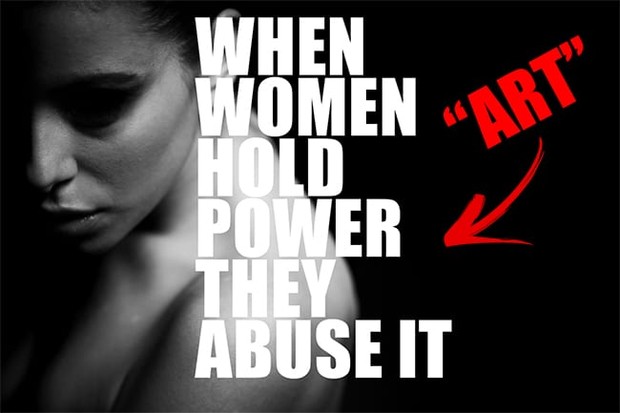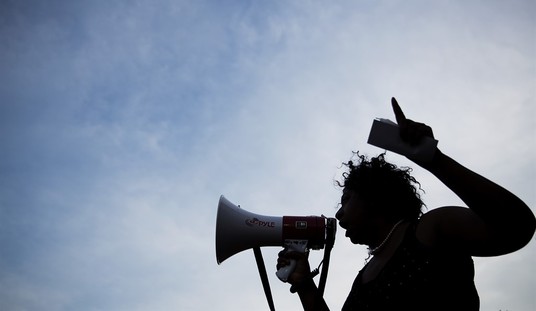
Last week, a tweet of mine went somewhat viral as it displayed a digital billboard in Manchester, UK, that featured messages that denigrated men. The messages said such things as “all men are dangerous,” or things like “when men hold power they abuse it.”
These are actual billboards pupping up around the UK. This anti-male insanity has to stop. pic.twitter.com/KtOITB5EVr
— Brandon Morse (@TheBrandonMorse) January 23, 2020
Looking further into it, I found the billboards were the creation of a modern artist by the name of Martin Firrell who is known for creating messages like this and displaying them in public places. Being a “modern artist,” Firrell operates with the intent to create “art” that’s mean to “start a conversation.”
The “art meant to start a conversation” reasoning behind calling what are essentially lazy and talentless works allows people to call what amounts to propaganda “art.” When people become angry at these works, the socio-political importance of the project is always brought up as a defense. The defense usually includes people who call the “art” brilliant saying they don’t truly believe in the radical message within it, but that it’s important because it “raises awareness” or “gets people talking about this problem.”
To that end, I decided to play their game and started my own little “art” experiment.
Creating a Twitter thread using my somewhat viral tweet, I created my own “art” meant to start a conversation with the sexes reversed and various things that feminists really don’t like to hear in the copy.
Using stock images of women, I fashioned “art” pieces to look similar to Firrell’s and put the copy over them, then tweeted them out.
— Brandon Morse (@TheBrandonMorse) January 24, 2020
I finished by making using their excuse.
“Don’t get mad. It’s just art meant to start a conversation,” I tweeted.
Don't get mad. It's just art meant to start a conversation.
— Brandon Morse (@TheBrandonMorse) January 24, 2020
I then sat back and wait to see if this would fly with the people who claim respect and appreciate this kind of “art.”
Spoiler alert: It didn’t.
Here are some of the replies I received as a result of my little experiment.
Don't you dare call misogyny art
— на все руки рукожопка (@Soyva27) January 28, 2020
This art won't start a conversation. It will only start hate.
— Small Pup (@Hermsios) January 24, 2020
why are your eyes so close together?
— tw1ttercr1tter (@tw1ttercr1tter1) January 24, 2020
The original billboards: made by a man against men.
Your "satirical" versions: made by a man against women.— Gatcho (@eugatcho) January 25, 2020
This is provocation and not helpful in anyway. Unless you want to see war between the sexes.
— Eric Busch (@jetfuel76) January 27, 2020
Just shut the fuck up
— Zuli (@lh8men) January 24, 2020
Doesn't look like you started any conversation but you did make yourself look quite pathetic. Bravo!
— 😷🐂Les Vaches (alertes) Qui Pissent🐄😷 (@ThatBluddyWoman) January 24, 2020
I mean, the difference is, the first lot are true and the second lot aren’t. If you said “women have less grip strength”, for instance, there wouldn’t be an argument. Keep it factual.
— Laura Green (@LauraGr31918310) January 24, 2020
As you can see, the “starting a conversation” excuse didn’t fly when it was directed in the opposite direction.
What does this tell us?
People who engage in the appreciation and spread of this type of “art” don’t appreciate the purpose behind it at all. What they appreciate is the confirmation bias and the conversations that occur with their point of view being on the offensive in a mainstream capacity. When the tables are turned, and the “conversation” puts them on the defensive, it suddenly stops being a conversation and starts being an expression of dangerous concepts that shouldn’t be put out in the world.
In other words, they know it’s not art and they don’t care if it starts conversations. What they really want is fully visible propaganda that leans to their side and slaps around those the “art” is aimed at. They enjoy watching people get angry and defensive, and even use the naturally angry responses as a Kafka trap, or pushing the idea that the anger is the very reason this “art” was highlighting the problem in the first place.
To combat this, the “art” needs to be called out for what it is, which is pure propaganda meant to insult, demean, or argue for one side or another. As I discussed in a previous post, no real talent goes into social art and shouldn’t be considered such while we have actual art from great artists on display and highly visible.
(READ: Activist “Social Art” Is Not Art)














